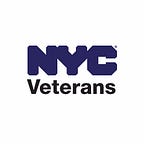Bringing Data-Driven Execution to NYC Veterans Services
On April 8, 2016, the New York City Department of Veterans Services (DVS) opened its doors as the first new NYC agency in at least 15 years. It is the first and only autonomous municipal department devoted solely to improving the lives of veterans and their families.
As a new agency, DVS has an unprecedented opportunity to build enduring systems that will define how we operate. We’re engineering DNA into the Department’s marrow.
What that means is an investment in DVS’ data infrastructure now — more than at any other point in the foreseeable future — has massive potential return on investment. This is a tremendous opportunity for a team — and community — committed to data-driven operations and evidence-based policy-making.
Veterans Data in NYC
DVS wants to account for NYC veterans, seek outcomes across quantifiable lines of effort, and inform itself and its constituents. But to do this, the Department needs data. Most importantly, DVS needs a robust ability to both collect data — from investigation and constituent interaction — and to develop processes to collate, analyze, and share those data.
This effort comes with some challenges:
1. Building out data collection: The best external estimate puts New York City’s veteran population at just under 190k. This number ignores the preponderance of Reserve Component service members and veterans — which we estimate at 21,000. Further, there is no credible data on NYC veterans with less than honorable discharges. Since DVS serves NYC veterans regardless of service component or discharge status, we need a more accurate count. If we were to rely on existing estimates alone, we wouldn’t be able to account for a substantial portion of our constituent population.
2. Identifying needs gaps: DVS, being a new agency, has a short history of constituent interaction; largely limited to veterans undergoing catastrophic life events or being unable to access basic services. Yet based on current records, we know that these types of constituent interactions represent less than 3% of just counted NYC veterans. What’s more, catastrophic life event help and navigation of services represents a very small portion of DVS’ service capabilities. So while DVS’ strategic lines of action are well defined and relevant, to fully serve our constituents we need to understand their needs beyond these two issues. From there, we can distill issues to operational tasks and prioritize both resources and capability building.
3. Information-sharing with existing organizations: New York City boasts a tremendous constellation of government agencies and non-government organizations with services relevant to the NYC veterans’ population. These agencies know of each other, but often operate redundantly or even at cross purposes. This operational climate is not due to any lack of good intentions, but rather the lack of any standardized processes to share information, manage records, and track efforts.
What We’re Doing
Our start-from-scratch situation offers a unique opportunity to build a world-class public information operation. Rather than shoehorning new systems into legacy processes, we are building our new department using best practices from the military, public, and private sectors, starting with creating a modern, digitally agile office to better serve our veterans. We’re committed to developing an adaptive strategy that relentlessly focuses on what our clients need.
To support that, over the next few months we will establish contracts to create a massive-scale constituent-facing web presence offering DVS services, referrals to the constellation of NYC service providers, and real-time, staffed case management. The pilot, NY Serves-NYC, has already served almost 2,000 NYC veterans. We are upping our presence on traditional social media outlets and bolstering our already robust boots-on-the-ground outreach with back-end management. This new level of client communication will help us account for who our constituents are, and what they need most.
Further, we understand that no matter how confident we are in our team, innovation and execution require both being open to new ideas and partnering with individuals and organizations to help move the mission forward. To that end, we are engaging with private, public, and academic organizations across the City and country to establish data-sharing processes and better understand the data that we have.
Get Involved
Students in the Interaction Design program at the School of Visual Arts have created projects for DVS supporting data collection and client engagement. Cadets at the United States Military Academy have begun analyzing data on NYC’s homeless veterans, hoping to build on DVS’ success ending chronic veteran homelessness in NYC. A myriad of service organizations and public agencies have reached out with ideas for data collaboration and support.
It has been a fantastic thing, seeing the reaction from friends, colleagues, and individuals who are excited about this new opportunity to develop a modern, efficient, municipal agency. We know that there are smart people out there with great ideas for government, and we would love to hear from you. Connect with us at info@veterans.nyc.gov, and on Twitter, Facebook, and Instagram at @NYCVeterans.
Venkat Motupalli is the CIO of the NYC Department of Veterans Services
